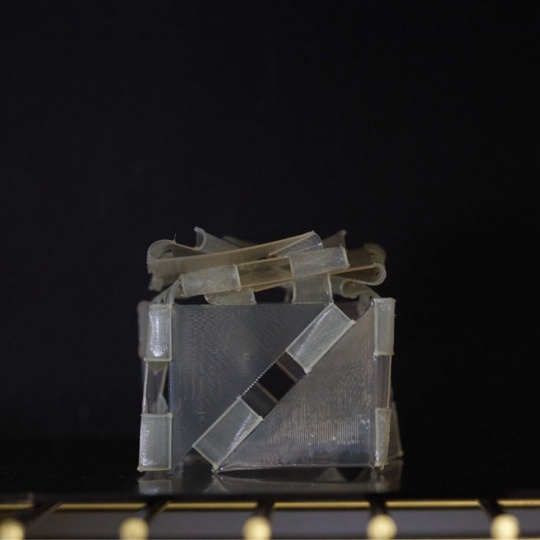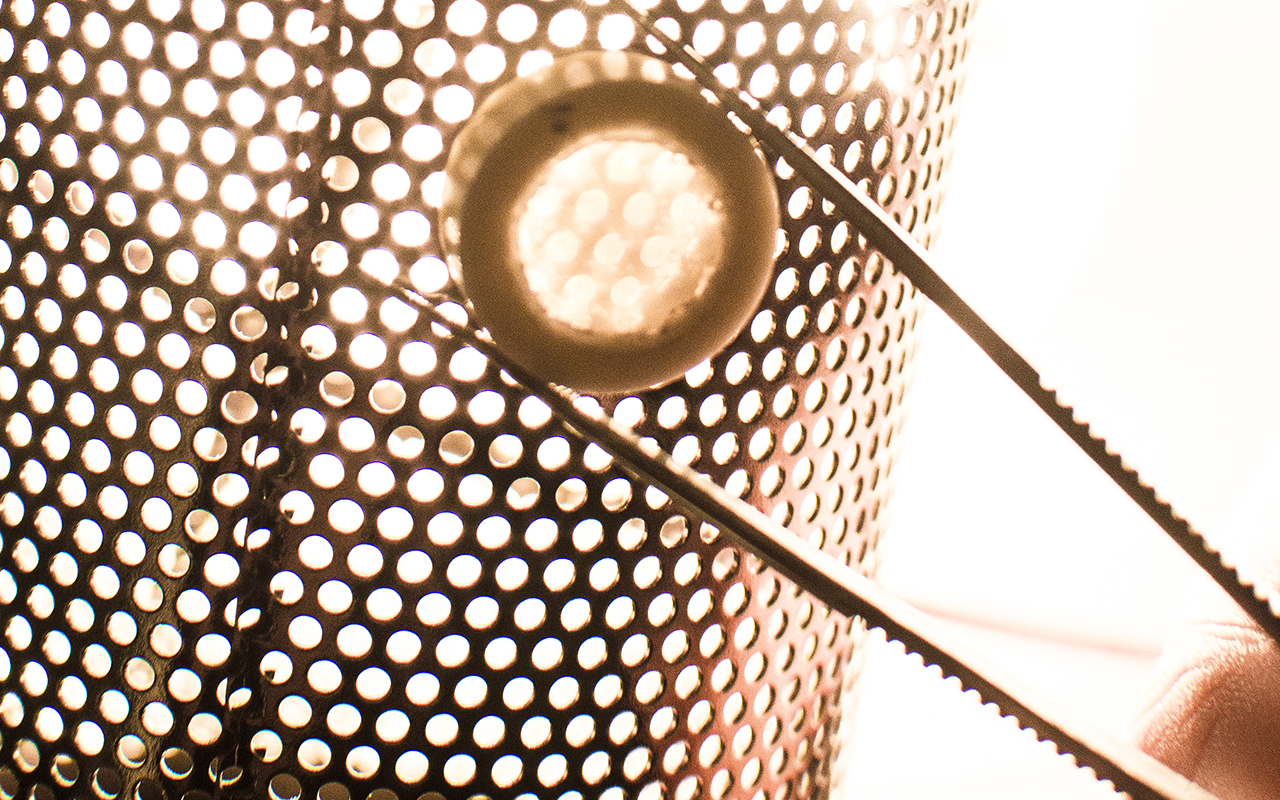(Self-folding “Rollbot” paves the way for fully untethered soft robots)
2019/8/21アメリカ合衆国ハーバード大学

・ SEAS と Caltech は、折り紙から着想を得た、外部刺激に応じた動きや変形が可能なソフトロボットのシステムを共同で開発。完全なテザー無しソフトロボット実現の可能性を導いた。
・ 研究チームでは、順次的な折り目による、単一構造で複数の形や機能をコード化できる折り紙に着目。熱にさらすと変形する液晶エラストマを用いて、異なる温度で特定の順序に折り曲がるようなプログラミングが可能な二種類のヒンジを 3D プリントした。
・ ヒンジを使用すると、ロボット機能のプログラミングや、変形の制御が容易になる。ロボット全体を予測できない形に変形させる代わりに、温度変化に応答させ、変形したい部分のみプログラミングすればよいからだ。
・ 新技術で 3D プリントしたヒンジを使用すると、温度応答、ヒンジ回転時のトルクの発生量、曲げ角度、折り曲げ方向などのプログラミングが完全に可能。・ 新技術の手法を実証するにあたり、研究チームは様々なソフトデバイスを作製したが、その中に、「ロールボット」の愛称がついたテザー無しのソフトロボットがある。
・ ロールボットは、長さ約 8cm、幅約 4cm の平らなシートを熱の表面にさらし、約 200℃で一方のヒンジを曲げ、五角のホイール型にカールさせて作製。
・ 他のヒンジは、ホイールの5つの側面にそれぞれ埋め込められている。ヒンジは、熱い表面に接触すると折り曲がり、ホイールを促して次の面に折り曲がる。熱の表面から離れると、ヒンジは展開され、次のサイクルに備える。
・ 既存のソフトロボットの多くは、外部からの電源供給とシステム制御のためにテザーが必要で、行使できる力の量が限られてしまう。アクティブなヒンジは、テザーが使用できない環境下や、ヒンジより重い物質を繰り返して持ち上げる時などに、ロボットを作動させるのに有効。
・ ヒンジを利用した他のデバイスでも、熱環境下に置くとペーパークリップのようにコンパクトな形に折り曲がり、冷却すると展開した。
・ テザー無しの構造物はパッシブな制御ができるので、特定の温度環境下にさらすだけで、ヒンジはプログラミングされたとおりに応答する。
・ 本研究では温度応答のみ焦点をあてたが、液晶エラストマは、光、pH、湿度やその他の外部刺激にも応答するようにプログラミングが可能。
・ 本研究は、設計した複合体内の応答性ポリマーが、様々な刺激に応答して、自発的に作動する材料となりうることを実証したもの。将来的には、このような材料がさらに複雑なタスクを実行できるようにプログラミングして、材料とロボットの境界がなくなるようにすることを目指す予定。
・ 本研究は、米国立科学財団(NSF)と NASA Space Technology Research Fellowship を通じて、Army Research Office 及び Harvard Materials Research Science and Engineering Center より支援を受けた。
URL: https://www.seas.harvard.edu/news/2019/08/self-folding-rollbot-paves-way-for-fullyuntethered-soft-robots
(関連情報)
Science Robotics 掲載論文(アブストラクトのみ:全文は有料)
Untethered soft robotic matter with passive control of shape morphing and propulsion
URL: https://robotics.sciencemag.org/content/4/33/eaax7044
<NEDO海外技術情報より>
Abstract
There is growing interest in creating untethered soft robotic matter that can repeatedly shape-morph and self-propel in response to external stimuli. Toward this goal, we printed soft robotic matter composed of liquid crystal elastomer (LCE) bilayers with orthogonal director alignment and different nematic-to-isotropic transition temperatures (TNI) to form active hinges that interconnect polymeric tiles. When heated above their respective actuation temperatures, the printed LCE hinges exhibit a large, reversible bending response. Their actuation response is programmed by varying their chemistry and printed architecture. Through an integrated design and additive manufacturing approach, we created passively controlled, untethered soft robotic matter that adopts task-specific configurations on demand, including a self-twisting origami polyhedron that exhibits three stable configurations and a “rollbot” that assembles into a pentagonal prism and self-rolls in programmed responses to thermal stimuli.



